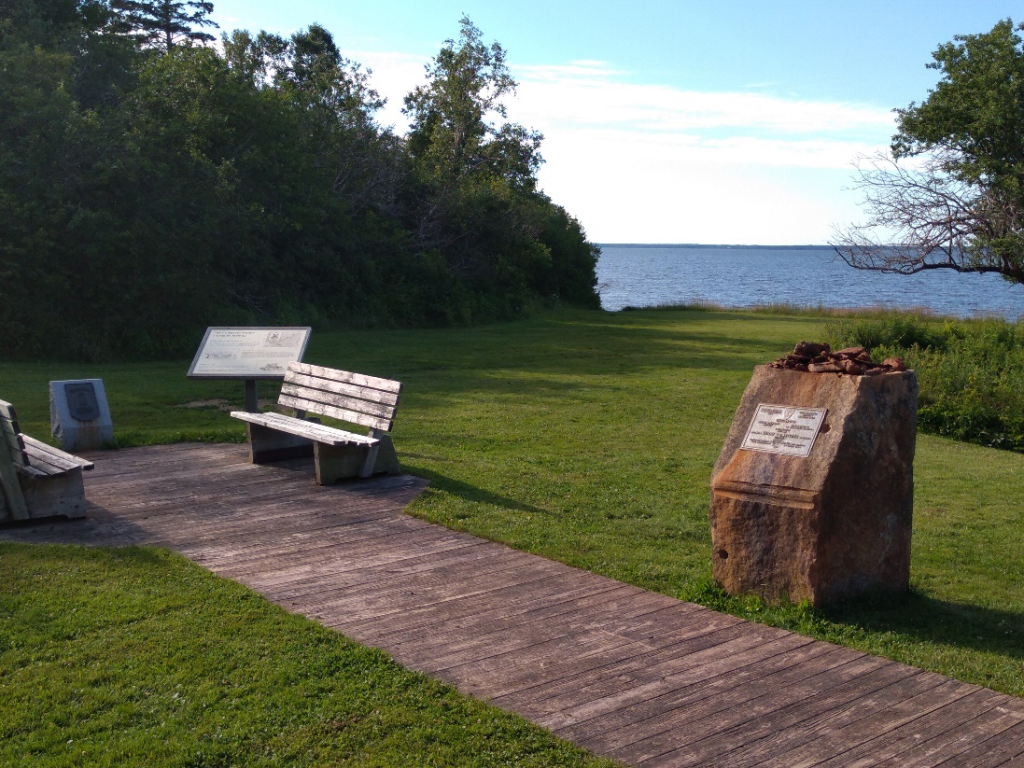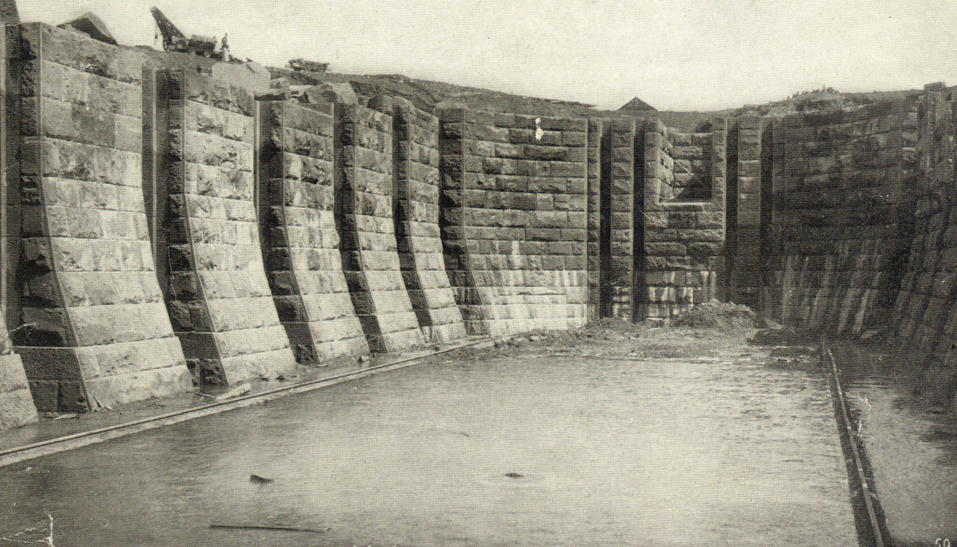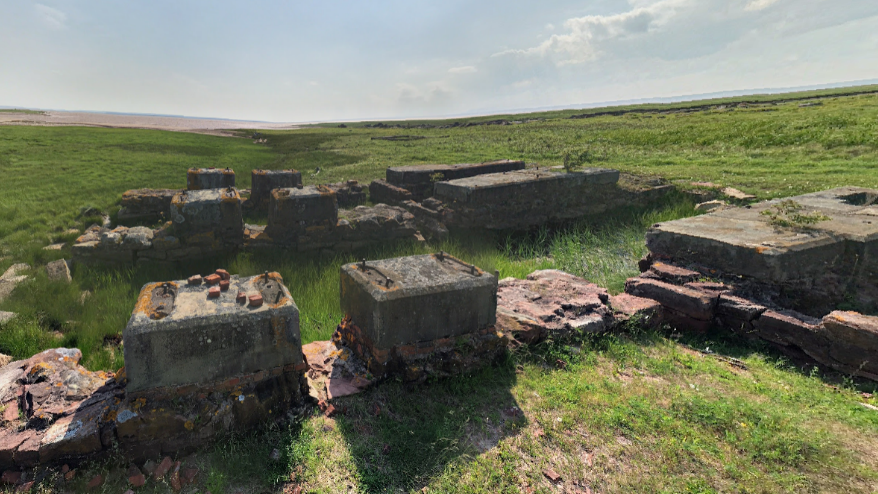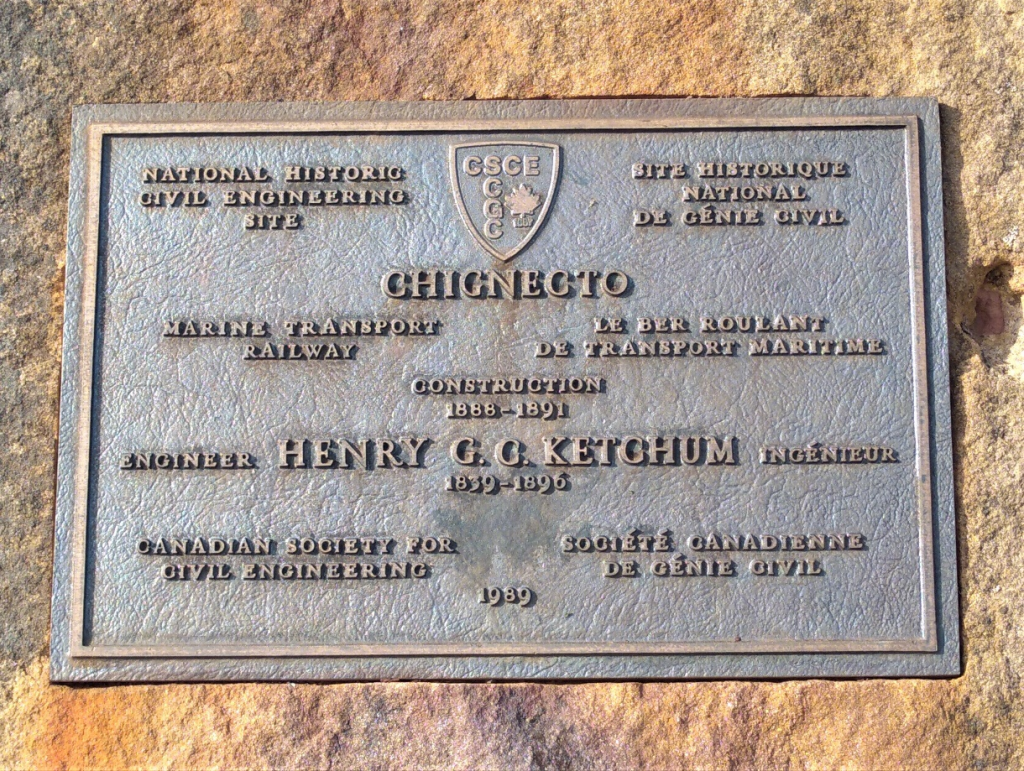Chignecto Marine Transport Railway, Tidnish, NS.

Site Location: Fort Lawrence, NS (GPS 45.8373238,-64.2730907) to Tidnish Dock Provincial Park, NS. (GPS 45.9957974, -64.0088255).


Plaque Location: The plaque is mounted on a large masonry block at Tidnish Dock Provincial Park. Lat.: 45° – 59’ – 50” N.; Long.: 64° – 00’ – 31” W. (GPS 45.9972124, -64.0086466).
From New Brunswick on Trans-Canada Highway 2, take Exit 513b to merge onto Trans-Canada Highway/ NB-16 toward Port Elgin/Prince Edward Island. Proceed 20.1 km, bend right onto Main Street, and continue 1.5 km to Baie Verte. Turn right (south east) onto NB 970 S and proceed 6.4 km to Tidnish Bridge. Turn left (east) onto Sunrise Trail/Tyndal Road/NS-366 E and proceed 3.7 km to turn left (north) on Tidnish Head Road. After 0.55 km, turn right (north) at the entrance to Tidnish Dock Provincial Park. Turn right into park and proceed 0.3 km to the parking area.
From Nova Scotia on Trans-Canada Highway 104, take Exit 3 and turn right on Route 6, Victoria Road (Sunrise Trail). Proceed 6.2 km through Amherst. Turn left at intersection with Route 366, Tyndal Road (Sunrise Trail) and proceed 22.0 km to just beyond the community of Tidnish Bridge. Turn left on Tidnish Head Road (before country store) and proceed 0.55 km to the entrance to Tidnish Dock Provincial Park.
Turn right into park and proceed 0.3 km to the parking area.

Description: Henry K. C. Ketchum designed the Chignecto Marine Railway to transport ocean-going ships up to 1800 tonnes (2000 tons) displacement some 27 km (17 mi.) across the isthmus of Chignecto between the Bay of Fundy and Baie Verte on the Northumberland Strait. The railway itself was twin standard-gauge rail tracks spaced 5.5 m (18 ft.) on centre. The design was to transfer vessels from tidewater to rail at a dredged approach basin at Baie Verte and, to cope with the Bay of Fundy tides, at a lock at Fort Lawrence. Hydraulic jacks would lift the ships on a 72 x 19 m (235 x 60 ft.) steel grillage connected to a wheeled cradle, which would then be pulled from the lifting basin hydraulically and connected to the two locomotives. The boat on the cradle would be towed across the isthmus and lowered into the water at the other lifting basin to float freely.
Construction commenced in 1888 and, despite political and financial hurdles, proceeded well. By 1891, 26 km (16 mi.) of the rail bed was finished, and 21 km (13 mi.) of track was laid. But the financial depression of 1890, and the loss of Canadian government support, caused construction to cease in August 1891. The project was never completed.
The Province of Nova Scotia purchased the Chignecto Marine Railway right-of-way in 2012. Today, the most notable remaining evidence of the project is the stone arch bridge at Tidnish, and remnants of various foundations at the Bay of Fundy terminus.


Historic Significance: Henry Ketchum (1839-1896) was the first graduate, in 1862, of the first university civil engineering program in Canada — at Kings College, now the University of New Brunswick. He worked initially in the Crown Land Office, then on railway construction projects in New Brunswick and Sao Paulo, Brazil. He then moved to London, England, where he became acquainted with many of the prominent civil engineers of the day, before submitting his formal proposal for the Chignecto Marine Transport Railway to the Government of Canada in 1881.
The project had the potential to shorten the maritime travel distance between the Gulf of St. Lawrence and the Bay of Fundy by 800 km (500 mi.). Its progress was monitored by engineers worldwide, who were planning marine railways across the Florida peninsula from south of Jacksonville on the Atlantic coast to the Gulf of Mexico, from Michigan City on Lake Huron to Toledo on Lake Erie, and from Lake Ontario to Georgian Bay. The collapse of the Chignecto Marine Transport Railway quashed these plans.

Plaque Wording: National Historic Civil Engineering Site. CSCE. CHIGNECTO Marine Transport Railway. Construction 1888-1891. Engineer HENRY G. C. KETCHUM. 1839-1896. Canadian Society for Civil Engineering. 1989.
SCGC. Site Historique National de Génie Civil. CHIGNECTO. Le ber roulant de transport maritime. Construction 1888-1891. HENRY G. C. KETCHUM. Ingénieur. 1839-1896. Société canadienne de génie civil. 1989.
Links to Online Documentation:
University of New Brunswick Archives, “Henry George Clopper Ketchum”
Canada’s Historic Places, “Tidnish Bridge”.
Biography of Henry George Clopper Ketchum
Alistair MacKenzie, “Ship Railways”, Canadian Consulting Engineer, 2003.